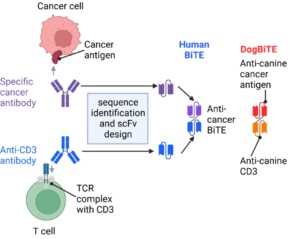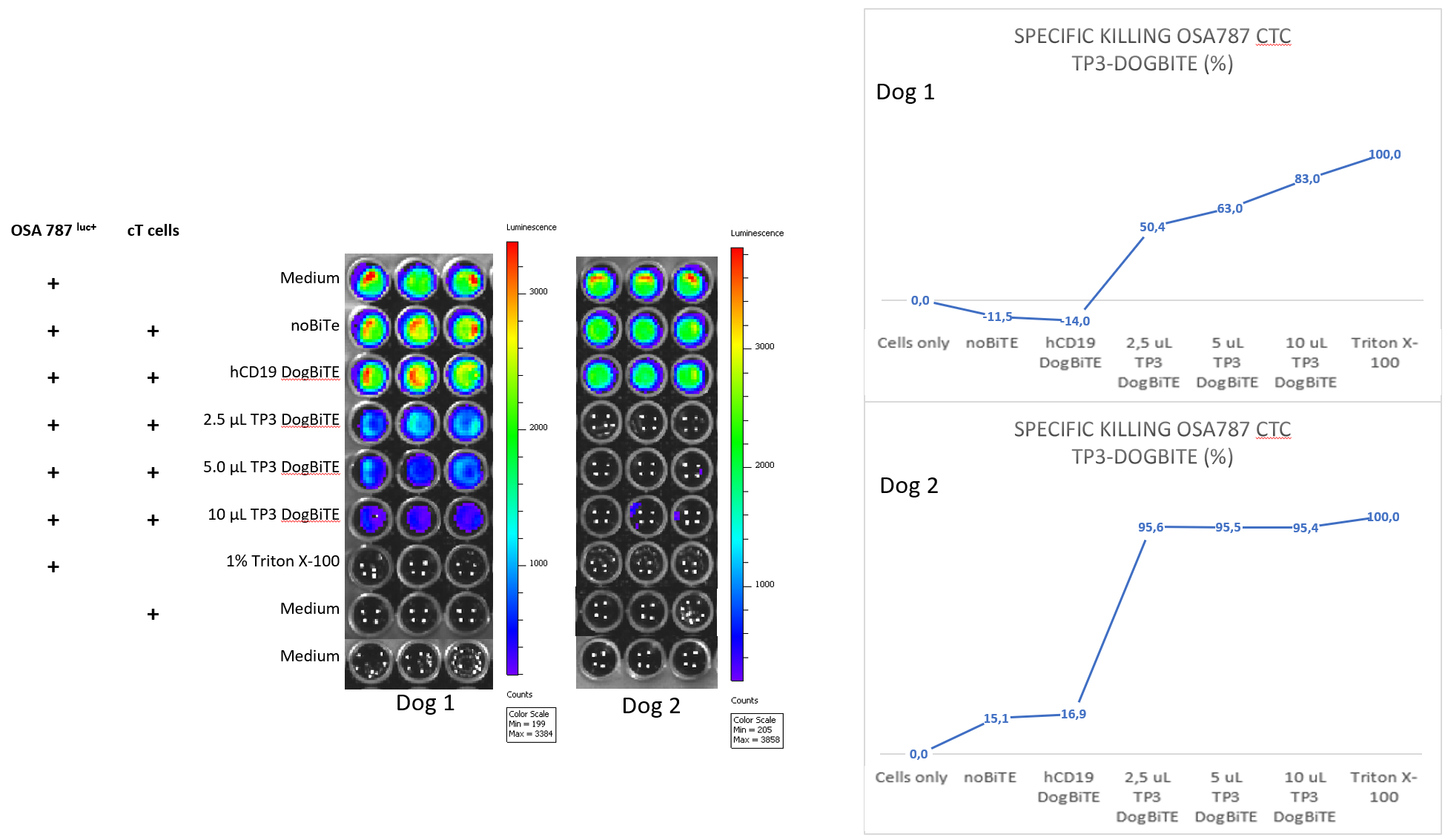Background
Dogs spontaneously develop cancer just like humans. Canine osteosarcoma is an aggressive bone tumour with high rate of metastasis (appr. 90%). Current treatment is amputation and adjuvant chemotherapy, however, many dogs are euthanized. The field of cancer immunotherapy seeks to modulate the immune system to kill tumour cells. It is a promising treatment approach to improve cancer care for dogs.
Business Opportunity
Inven2 seeks collaboration with industrial partners and licensors who can support the clinical development of a specific DogBiTE drug in canine patients with osteosarcoma.
Technology
Scientists at Oslo University hospital / University of Bergen have designed the first ever canine BiTE molecule (named DogBiTE). BiTEs are therapeutic proteins derived from antibodies, where the single chain fragment variable (scFv) of two antibodies is connected, generating a bi-specific molecule.

Figure 1: Design of BiTE molecules
Two single chain Fragment variable (scFv) are connected via a linker. One will target cancer markers and the other CD3 on T cells. The anti-CD3 should not only bind the T cells but also have the capacity to induce stimulation in defined formats. In human, anti-CD3 clone OKT-3 is known to have these properties. To design DogBiTE we have identified an anti-canine CD3 antibody which showed similar capacities as OKT-3.
The proposed DogBiTE drug is based on the antibody TP-3 which is known to be selective for osteosarcoma, with lower reactivity for other sarcoma types. Furthermore, TP-3 exhibits limited cross-reactivity to healthy tissues. The antibody binds unique epitopes of the cell surface-expressed alkaline phosphatase (ALP) on osteosarcoma cells. The target, ALPL-1, is highly and specifically expressed in primary and metastatic ostosarcoma. Proof of mechanism studies have been performed demonstrating that the specific osteosarcoma target can stimulate DogBiTEs. Moreover, the effector T-cells can kill target in the presence of DogBiTEs. The results from the pre-clinical studies validate the capacity of DogBiTE to induce target killing and make DogBiTE a promising strategy for treating canine osteosarcoma.

Figure 2: Bioluminescence cytotoxic assay, showing the effect of TP-3 DogBiTE on human osteosarcoma cells.
The intensity of the bioluminescent signal is proportional to the number of viable osteosarcoma cells (OSA787 luc+). Canine T-cells (cTc) from two different dogs were added to the wells at a 10:1 effector to target cell ratio. The TP3 DogBiTE was added at increasing concentration. hCD19-DogBiTE is a B-cell targeting BiTE, and TritonX is 100% cytotoxic.
% specific killing = 100x (spontaneous cell death (p/s) –sample (p/s))/(spontaneous cell death (p/s) – maximal killing (p/s))
Intellectual Property
A patent application has been filed.
References
Mensali, Nadia, et al. «ALPL-1 is a target for chimeric antigen receptor therapy in osteosarcoma.» Nature Communications 14.1 (2023): 3375.



